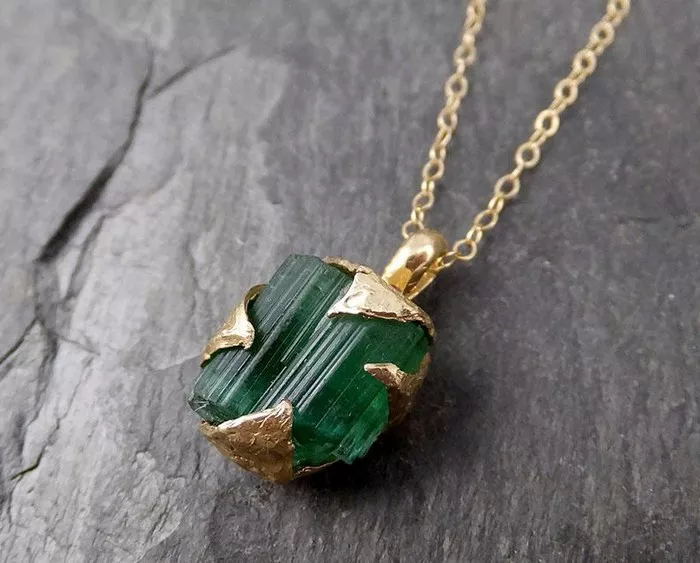Emeralds have been cherished for their exquisite beauty and timeless elegance for centuries. As one of the most coveted gemstones, emeralds hold significant value and allure in the world of jewelry and gemstone collecting. However, with the rising demand for emeralds, the market has become flooded with synthetic and imitation stones, making it increasingly challenging to distinguish between genuine and fake emeralds. In this article, we will explore how to tell if a raw emerald is real by examining its key characteristics, properties, and testing methods.
Understanding Emeralds
Emeralds are a variety of the mineral beryl, prized for their vibrant green color and exceptional clarity. The green color of emeralds is caused by the presence of chromium, vanadium, and iron within the crystal structure, giving them their distinctive hue. Emeralds are relatively hard gemstones, ranking 7.5 to 8 on the Mohs scale of hardness, making them suitable for use in jewelry.
Colombia is renowned for producing some of the finest emeralds in the world, known for their intense green color and exceptional clarity. Other significant sources of emeralds include Brazil, Zambia, and Afghanistan.
Genuine emeralds are highly valued for their rarity, beauty, and durability. However, due to their high value, emeralds are often subject to various treatments and enhancements to improve their appearance and marketability. Common treatments for emeralds include oiling, filling, and dyeing to enhance color and clarity.
How to Tell if a Raw Emerald is Real?
Distinguishing between real and fake emeralds requires careful examination and testing of the gemstone’s characteristics and properties. Here are some key indicators to look for when determining if a raw emerald is real:
Color: The color of an emerald is one of the most important factors in determining its authenticity. Genuine emeralds exhibit a rich, vibrant green color that is often described as “emerald green.” This color is typically deep and intense, with subtle hints of blue and yellow. Be wary of emeralds that appear too light or too dark, as well as those with unnatural hues such as bluish-green or yellowish-green, which may indicate synthetic or treated stones.
Clarity: Clarity refers to the presence of inclusions or internal flaws within the emerald. While some inclusions are expected in natural emeralds due to their formation process, genuine emeralds typically have fewer inclusions compared to synthetic or imitation stones. Look for emeralds with minimal to no visible inclusions under magnification, as excessive inclusions may indicate a fake or low-quality stone.
Cut: The cut of an emerald can also provide clues to its authenticity. Genuine emeralds are often cut in traditional shapes such as emerald-cut, oval, or pear-shaped, to maximize their color and brilliance. Pay attention to the quality of the cut, as well as the symmetry and proportions of the facets. Poorly cut or irregularly shaped emeralds may be indicative of a synthetic or imitation stone.
Surface Texture: The surface texture of an emerald can reveal valuable information about its authenticity. Genuine emeralds have a smooth, polished surface with a natural luster that reflects light evenly. Be cautious of emeralds with a dull or waxy appearance, as well as those with visible scratches, pits, or rough patches, which may indicate a fake or treated stone.
Weight and Density: Genuine emeralds have a specific gravity ranging from 2.67 to 2.78, depending on their composition and origin. You can determine the density of an emerald by comparing its weight to its volume. Genuine emeralds are typically heavier and denser than most imitations, such as glass or plastic. You can use a gemological scale or water displacement method to measure the density of the emerald and assess its authenticity.
Transparency and Refractive Index: Transparency and refractive index are also important factors to consider when evaluating the authenticity of an emerald. Genuine emeralds are transparent to translucent, allowing light to pass through and exhibit internal reflections and refractions. You can test the transparency of an emerald by holding it up to a light source and observing how much light passes through. Additionally, you can use a refractometer to measure the refractive index of the emerald, which should fall within the range of 1.57 to 1.58 for genuine stones.
Testing Methods for Real Emeralds
In addition to visual inspection, there are several testing methods you can use to determine if a raw emerald is real:
Refractive Index: As mentioned earlier, you can use a refractometer to measure the refractive index of the emerald and compare it to the known values for genuine emeralds.
Specific Gravity: You can measure the specific gravity of the emerald using a gemological scale or water displacement method to assess its density and determine its authenticity.
Spectroscopy: Spectroscopy techniques, such as UV-visible spectroscopy and infrared spectroscopy, can be used to analyze the chemical composition and spectral characteristics of the emerald, providing valuable information about its authenticity and any treatments or enhancements it may have undergone.
X-Ray Fluorescence (XRF): XRF analysis can be used to detect trace elements and impurities within the emerald, helping to identify its origin and authenticity.
Conclusion
Distinguishing between real and fake emeralds requires careful examination, testing, and knowledge of the gemstone’s characteristics and properties. By assessing factors such as color, clarity, cut, surface texture, weight and density, transparency and refractive index, as well as conducting various testing methods, you can confidently determine if a raw emerald is real. Remember to seek guidance from reputable gemological experts and laboratories to ensure the authenticity and value of your emerald investment. With these tips and techniques, you can enjoy the beauty and allure of genuine emeralds for years to come.


